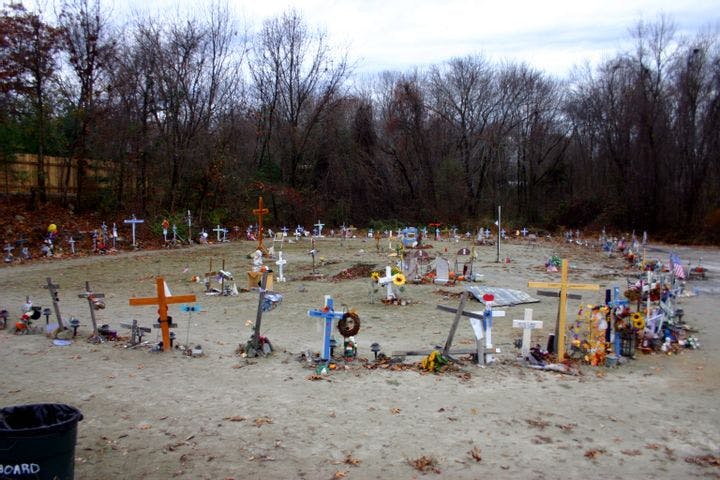Winter 2013
A nightclub fire’s unseen burns
– The Wilson Quarterly
In 2003, Rhode Island suffered one of the deadliest nightclub fires in U.S. history. What was the longterm toll on the survivors?
On February 20, 2003, the 1980s metal band Great White opened its set at The Station, a nightclub in West Warwick, Rhode Island, with an impressive pyrotechnic display. The packed house of more than 450 fans roared their approval. But sparks landed on flammable sound insulation near the stage, igniting a furious blaze. The fire became one of the deadliest in U.S. history; in the panicked rush to escape, 100 people were killed and 200 more were injured.
The trauma that night left an indelible mark on the survivors. Surveying them several years after the event, Jeffrey C. Schneider, a physician at Harvard Medical School, and his colleagues found high rates of alcohol abuse, depression, and post-traumatic stress symptoms. There may be lessons in the experience on how to treat survivors of all kinds of trauma, from war to natural disasters.
Schneider and his colleagues were surprised to discover that victims who emerged from The Station physically unscathed suffered long-term setbacks as serious as those that afflicted burn victims. Of the 104 injured and uninjured victims who returned a survey sent to all known survivors between 2005 and ’07, both groups reported an abnormally low general quality of life.
The similarities didn’t end there. Sixty-two percent of burn victims needed psychological counseling; 58 percent of those who were not injured needed it as well. Thirty-five percent of the injured and 21 percent of the uninjured suffered severe post-traumatic stress symptoms. (Another 21 percent and 24 percent, respectively, reported moderate symptoms of post-traumatic stress.) While 38 percent of the injured admitted to alcohol misuse since the fire, some 47 percent of the unhurt also reported it.
Employment after the fire proved the exception; burn victims were harder hit by work-related problems than their uninjured counterparts. Less than 70 percent of burn victims returned to the job they had held at the time of the fire, compared with more than 90 percent of the people who were unhurt. The injured, many of whom endured long hospitalizations and bore significant scars, reported higher rates of unemployment or only part-time work subsequent to the fire. A third of injured survivors who responded to the survey said they were currently out of a job.
Though burns compounded survivors’ problems, especially in employment, emotional trauma was the main source of longer-term ills, the authors conclude. As in war zones and areas hit by natural disasters, the uninjured probably received no medical care and thus had little access to services to help them cope.
The lesson of West Warwick, Schneider and his colleagues believe, is that such services should be urged upon survivors of trauma.
THE SOURCE: “The Long-Term Impact of Physical and Emotional Trauma: The Station Nightclub Fire” by Jeffrey C. Schneider, Nhi-Ha T. Trinh, Elizabeth Selleck, Felipe Fregni, Sara S. Salles, Colleen M. Ryan, and Joel Stein. Plos One, Oct. 2012.
Image courtesy of Wikimedia Commons
